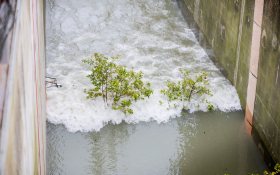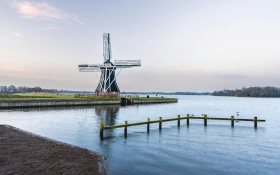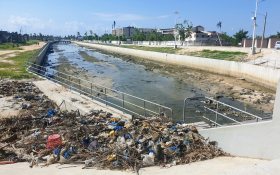Justdiggit about to start re-greening desert areas in Mtanana, Tanzania
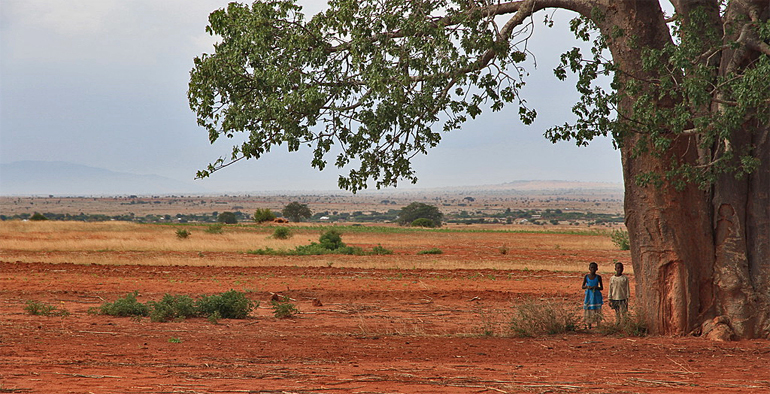
An expert team of non-profit organisation Justdiggit just returned from a field visit in Tanzania in preparation to the start on the first re-greening project in Mtanana.
Justdiggit signed a Memorandum of Understanding (MoU) with the government of Tanzania last October on the creation of a 3,000 ha national hydrologic corridor by restoring the landscape so it can capture rain again. The first work on the corridor in Tanzania is expected to start this summer.
Little rain
Mtanana is a very dry area where farmers do small-scale farming and keep livestock. Crop yields are currently under pressure and there is overgrazing.
There is little rain, and when it rains it is often very intense making it impossible to infiltrate in the soil; it flushes away the fertile soil, and causes erosion and down stream flooding.
The area is home to Africa’s most iconic tree, the Baobab tree (on top photo). It can live for up to a thousand years, but like all plants it needs water. With the help of Justdiggit's program the tree can flourish once again.
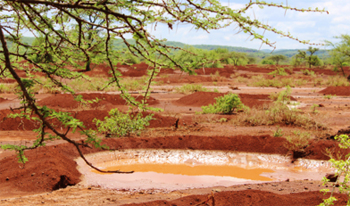 As a result of the bunds dug in Kenya the landscape is re-greening.
As a result of the bunds dug in Kenya the landscape is re-greening.
Greening the desert
Justdiggit combats the desertification by applying rainwater harvesting techniques, conservation methods and agroforestry together.
Once an area is re-greened, the process of evapotranspiration can start again, so that the hydrologic cycle is positively influenced.
Multiple re-greening projects cover a larger area, a so called hydrological corridor, and together they recreate the local hydrological cycle and eventually impact the wider regional hydrological cycle.
The restored vegetation also brings more moisture into the air, which helps to create clouds and therefore restores the water cycle.
Re-greening the African sub-Sahara helps to cool the planet.
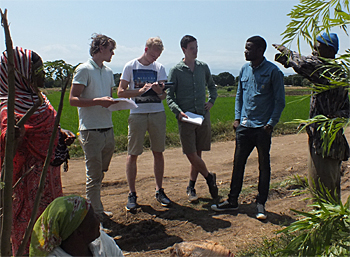 Dutch students doing field research lin Tanzania last year.
Dutch students doing field research lin Tanzania last year.
Rainwater harvesting
Even in dry areas like Mtanana there is enough rain fall to return the natural vegetation. Justdiggit uses old and new techniques to harvest the rainwater.
These techniques focus on opening up the soil for rainwater to infiltrate, for instance by digging trenches and constructing sand dams (bunds) that reduce the run off and create an area for family farming.
By installing grazing management committees, overgrazing in these areas can be prevented.
More vegetation leads to a more fertile land and therefore creates a greater food security and an extra income for the community.
Justdiggit already started a national hydrological corridor programme in Kenya and Morocco.
This news item is based on the update report on the webite of Justdiggit.
Read also on this website
● COP22: Africa's hydrologic green corridor grows into reality for jump starter JustDiggit, 17 November 2016
● COP22: African agriculture gains momentum to produce more food with less water, 16 November 2016
● Country: Tanzania
More information
Justdiggit
Naga Foundation
Amsterdam, the Netherlands
+31 20 737 23 66
www.justdiggit.org
An explanation of the national hydrologic corridor programme.

